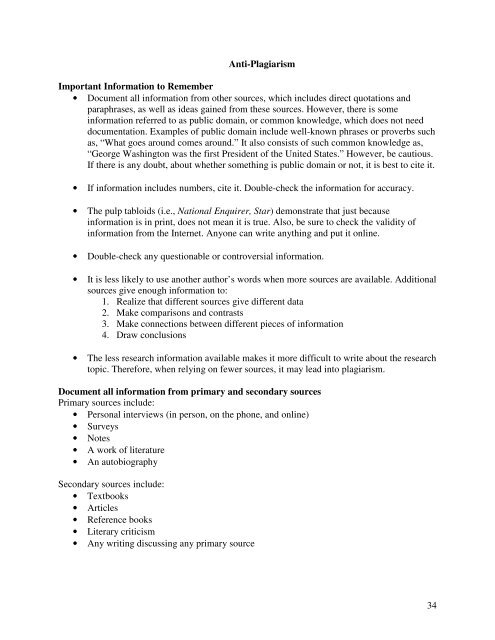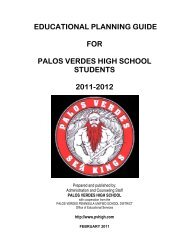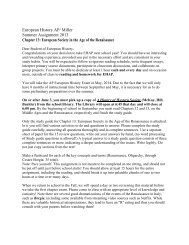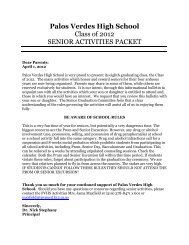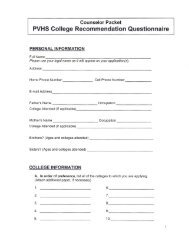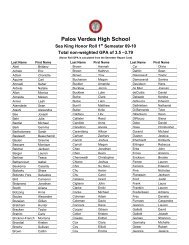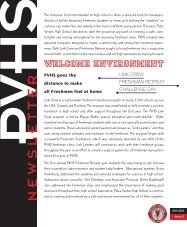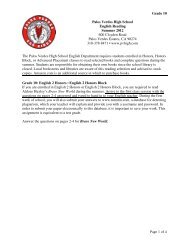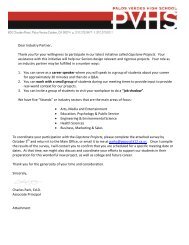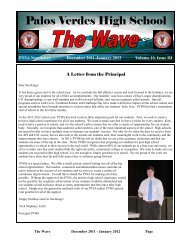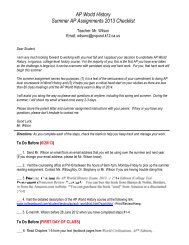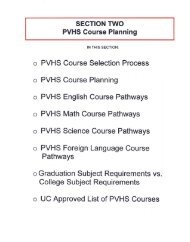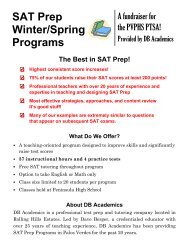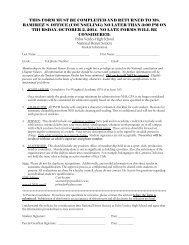Writing Manual & Sea King Capstone - Palos Verdes High School
Writing Manual & Sea King Capstone - Palos Verdes High School
Writing Manual & Sea King Capstone - Palos Verdes High School
You also want an ePaper? Increase the reach of your titles
YUMPU automatically turns print PDFs into web optimized ePapers that Google loves.
Anti-Plagiarism<br />
Important Information to Remember<br />
• Document all information from other sources, which includes direct quotations and<br />
paraphrases, as well as ideas gained from these sources. However, there is some<br />
information referred to as public domain, or common knowledge, which does not need<br />
documentation. Examples of public domain include well-known phrases or proverbs such<br />
as, “What goes around comes around.” It also consists of such common knowledge as,<br />
“George Washington was the first President of the United States.” However, be cautious.<br />
If there is any doubt, about whether something is public domain or not, it is best to cite it.<br />
• If information includes numbers, cite it. Double-check the information for accuracy.<br />
• The pulp tabloids (i.e., National Enquirer, Star) demonstrate that just because<br />
information is in print, does not mean it is true. Also, be sure to check the validity of<br />
information from the Internet. Anyone can write anything and put it online.<br />
• Double-check any questionable or controversial information.<br />
• It is less likely to use another author’s words when more sources are available. Additional<br />
sources give enough information to:<br />
1. Realize that different sources give different data<br />
2. Make comparisons and contrasts<br />
3. Make connections between different pieces of information<br />
4. Draw conclusions<br />
• The less research information available makes it more difficult to write about the research<br />
topic. Therefore, when relying on fewer sources, it may lead into plagiarism.<br />
Document all information from primary and secondary sources<br />
Primary sources include:<br />
• Personal interviews (in person, on the phone, and online)<br />
• Surveys<br />
• Notes<br />
• A work of literature<br />
• An autobiography<br />
Secondary sources include:<br />
• Textbooks<br />
• Articles<br />
• Reference books<br />
• Literary criticism<br />
• Any writing discussing any primary source<br />
34


